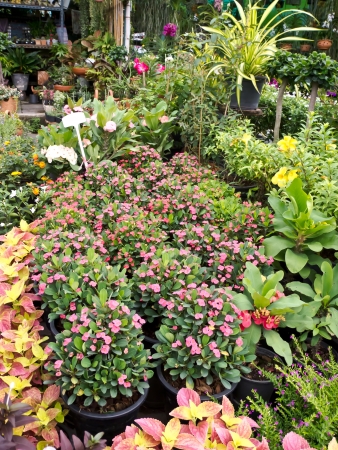1. Introduction: The British Climate and Polytunnel Humidity
Polytunnels have become an essential component of horticultural practice across the United Kingdom, offering extended growing seasons and protection from the often unpredictable British weather. However, the UK’s maritime climate, characterised by frequent rainfall, moderate temperatures, and high relative humidity, presents a unique set of challenges for growers using polytunnels. Unlike continental climates where humidity can be managed more straightforwardly, British growers must contend with persistent moisture in the air throughout much of the year. This elevated humidity not only affects plant health but also creates ideal conditions for condensation and mould development within polytunnels. Understanding these seasonal humidity issues is crucial for effective crop production, as they directly impact plant vigour, disease prevalence, and overall yield. In this article, we will explore how the specific climate conditions in Britain influence humidity management in polytunnel environments, setting the stage for practical solutions to mitigate condensation and mould risks.
2. Understanding Seasonal Humidity Patterns
The British climate is renowned for its variability, and this is particularly evident in the fluctuating humidity levels experienced throughout the year. For polytunnel growers, comprehending these seasonal patterns is crucial to effective environmental management. The interplay between temperature and moisture, coupled with the UK’s frequent rainfall and overcast skies, results in a dynamic microclimate within polytunnels that poses unique challenges at different times of the year.
Annual Humidity Fluctuations: A Closer Look
Humidity levels in Britain typically peak during late autumn and winter months, when colder external temperatures cause condensation on the inner surfaces of polytunnels. Conversely, spring and summer can bring rapid shifts as warm air holds more moisture, leading to sudden increases in humidity following rain or irrigation events. These changes are further influenced by regional differences—coastal areas often experience higher baseline humidity than inland locations.
Monthly Average Relative Humidity Across the UK
| Month | Average Relative Humidity (%) | Key Challenges for Growers |
|---|---|---|
| January | 85-90 | High condensation risk; limited ventilation opportunities |
| April | 75-80 | Fluctuating temps; increased mould risk after showers |
| July | 65-75 | Rapid humidity spikes post-irrigation; ventilation critical |
| October | 80-88 | Damp conditions return; condensation and fungal threats rise |
The Impact on Polytunnel Management Practices
This seasonality necessitates adaptive strategies from growers. During wet, cooler months, maintaining airflow and managing condensation become top priorities to prevent mould proliferation. In warmer periods, attention shifts towards rapid response to unexpected humidity surges, ensuring crops remain healthy despite the sometimes unpredictable British weather. Recognising these patterns allows for proactive planning—such as adjusting ventilation schedules or deploying dehumidification tools—to better safeguard crops against humidity-induced issues all year round.

3. Causes and Effects of Condensation in Polytunnels
Condensation is a persistent challenge within British polytunnels, especially during the fluctuating seasonal humidity. Understanding its origins and consequences is crucial for effective management. The primary causes of condensation stem from the interaction between warm, moisture-laden air inside the tunnel and cooler external temperatures. As British weather is renowned for its unpredictability, sudden drops in night-time temperatures frequently cause internal surfaces—particularly the polythene cover—to cool rapidly. When humid air touches these cold surfaces, water vapour condenses, resulting in visible droplets.
Common Reasons for Condensation Build-up
Several factors contribute to excessive condensation in UK polytunnels. High plant density increases transpiration rates, releasing more moisture into the air. Insufficient ventilation—often a response to maintaining warmth during colder months—traps this moisture. Additionally, inadequate ground covering or exposed soil can allow extra water evaporation after watering or rainfall infiltration. These combined conditions are particularly pronounced in late autumn and winter, when low sunlight reduces evaporation but high humidity persists.
Implications for Crop Health
Persistent condensation creates an environment ripe for fungal diseases such as botrytis (grey mould) and powdery mildew, both prevalent in the damp British climate. Water droplets settling on foliage provide ideal conditions for spore germination and rapid disease spread, threatening crop yield and quality. Furthermore, prolonged leaf wetness can impair photosynthesis and increase physiological stress on sensitive plants.
Impact on Tunnel Infrastructure
Beyond crop health, recurring condensation has negative implications for the structural integrity of polytunnels. Regular moisture accumulation accelerates wear on metal frames through rust and corrosion, particularly at joints and fixings. Timber supports may suffer from rot if persistently damp. Over time, repeated wetting and drying cycles can degrade polythene sheeting, reducing its effectiveness as a barrier and necessitating more frequent replacements—a significant consideration given the cost-sensitive nature of British horticulture operations.
4. Identifying and Preventing Mould Growth
Mould growth is a persistent issue within polytunnels, especially given the UK’s typically damp and variable climate. Early identification and targeted prevention are crucial to maintaining healthy crops and minimising losses. This section provides practical guidance for growers, focusing on early detection and culturally relevant preventative strategies suited to British conditions.
Spotting Early Signs of Mould
Timely recognition of mould can make the difference between a minor setback and a significant outbreak. Key indicators include:
- Discoloured Patches: Look out for grey, white, or green fuzzy spots on plant leaves, stems, or compost surfaces.
- Unpleasant Odours: Musty or earthy smells often signal fungal activity before visual signs appear.
- Leaf Damage: Wilting, yellowing, or rapid deterioration of plant tissue may be an early warning.
- Damp Corners: Consistently wet areas in the tunnel, especially near doors or along base rails, are prime sites for mould initiation.
Culturally Relevant Prevention Measures
The UK’s maritime climate presents unique challenges, but also offers opportunities for tailored solutions. Below is a table summarising practical actions specifically effective in British polytunnel environments:
| Prevention Measure | Description | UK-Specific Application |
|---|---|---|
| Regular Ventilation | Open doors and vents daily to promote air circulation and reduce humidity. | Even during cooler months, brief ventilation helps mitigate condensation risks typical in the UK. |
| Spacing Plants Adequately | Avoid overcrowding to ensure good airflow around each plant. | This is particularly important with fast-growing crops like salad leaves commonly grown in British tunnels. |
| Watering Practices | Water at the base of plants in the morning to allow surfaces to dry by evening. | This aligns with unpredictable UK weather patterns and shorter daylight hours in winter. |
| Routine Cleaning | Remove plant debris and sanitise surfaces regularly. | A routine post-harvest clean-up is essential following the long, damp British growing season. |
| Mould-Resistant Varieties | Select crop varieties bred for disease resistance. | Many UK seed suppliers offer cultivars specifically adapted to local conditions. |
Community Insights: Traditional Approaches in the UK
Bespoke advice from experienced British growers often emphasises tried-and-tested methods such as laying gravel paths for drainage, using horticultural fleece to manage temperature swings, and incorporating rainwater harvesting systems to control moisture levels without overwatering. These practices reflect both environmental sensitivity and cultural wisdom built up over generations of gardening in Britain’s challenging climate.
Summary Checklist for British Growers:
- Inspect plants weekly for mould signs
- Ventilate even during light rain – drizzle is no excuse!
- Avoid watering late in the day, especially in autumn and spring
- Keep polytunnel structures clean and free from debris year-round
- Liaise with local gardening groups or allotment societies for region-specific tips
This proactive approach ensures your polytunnel remains a healthy environment for crops throughout the ever-changing British seasons.
5. Ventilation and Air Circulation Strategies
Effective ventilation and air circulation are pivotal for managing humidity levels in polytunnels, particularly given the unpredictable nature of the British climate. Without proper airflow, condensation readily accumulates on internal surfaces, fostering conditions ideal for mould development and plant diseases. Below, we present evidence-based advice tailored to UK growers, focusing on practical techniques and products widely recognised across the British horticultural sector.
Natural Ventilation Techniques
The strategic use of side vents and roll-up doors remains a cornerstone of passive ventilation in UK polytunnels. By opening these features during milder, drier periods—especially in late mornings when external humidity is lower—growers can encourage cross-ventilation, which efficiently disperses moist air. This approach is cost-effective and requires minimal installation, making it highly accessible for both amateur and commercial operations.
Mechanical Ventilation Solutions
For larger or more intensively managed sites, mechanical solutions such as oscillating fans or extractor systems are increasingly popular among British growers. Positioning circulation fans at regular intervals along the tunnel’s length can break up stagnant pockets of humid air. Evidence from trials conducted by UK horticultural research bodies indicates that consistent airflow reduces condensation by up to 40%, significantly limiting the risk of Botrytis and other fungal pathogens.
Humidity Control Products Familiar to British Growers
Desiccant dehumidifiers designed specifically for greenhouse environments are gaining traction, particularly during extended wet spells typical of British springs and autumns. Additionally, moisture-absorbing granules or pads, available from most UK garden centres, provide a supplementary line of defence when placed in high-risk areas. These products are user-friendly and require only periodic replacement.
Best Practice Tips
Successful airflow management hinges on regular monitoring. Installing affordable hygrometers allows growers to make informed decisions about when to ventilate or activate fans. Routine checks of vent mechanisms ensure they remain unobstructed—a crucial consideration given how easily debris can accumulate during stormy British weather.
Conclusion
By combining natural and mechanical ventilation strategies with familiar British products, growers can create an environment within their polytunnels that minimises humidity-related challenges year-round. Attention to airflow not only curbs condensation but also supports overall plant health—a sound investment for any grower facing the vagaries of the UK climate.
6. Innovative Solutions and Emerging Best Practices
In response to the persistent humidity challenges in British polytunnels, a variety of innovative solutions and best practices have emerged, drawing on both technological advancements and region-specific expertise. The UK’s unique climate necessitates tailored approaches to managing condensation and mould, with a focus on sustainability, energy efficiency, and practicality for growers.
Recent Innovations in Humidity Control
Modern climate control systems are now more accessible to small- and medium-scale British growers. Automated ventilation systems equipped with smart sensors can detect spikes in humidity and adjust airflow accordingly, reducing manual intervention and ensuring optimal growing conditions. Additionally, thermal screens not only moderate temperature but also help limit condensation by balancing internal climates during abrupt weather changes typical of the UK.
UK-Adapted Technologies
Technologies specifically designed for British conditions are gaining traction. For instance, polytunnel cladding materials with anti-drip coatings have been developed to channel condensation away from plants and structural components. Dehumidification units tailored for low-energy consumption provide year-round humidity management without excessive operational costs—crucial given the UK’s focus on environmental responsibility. Moreover, rainwater harvesting systems integrated with polytunnel irrigation can help regulate internal moisture levels while conserving water resources.
Practical Tips for Long-Term Humidity Management
Beyond high-tech solutions, several practical measures are proving effective across the UK. Regularly inspecting tunnel integrity prevents leaks that could exacerbate humidity issues. Implementing raised beds and ensuring adequate plant spacing encourages air circulation and minimises stagnant moisture zones. Using organic mulches judiciously can also help regulate soil moisture without contributing to surface condensation. Finally, maintaining detailed records of internal conditions enables growers to anticipate seasonal shifts and adjust strategies proactively.
Together, these innovations and practices represent a forward-thinking approach to tackling the evolving challenge of seasonal humidity in British polytunnels—balancing modern technology with time-tested horticultural wisdom for resilient crop production.
7. Conclusion: Safeguarding Polytunnels for British Growers
Successfully managing seasonal humidity in polytunnels is crucial for UK growers, where unpredictable weather and persistent moisture create unique challenges. Throughout this guide, we have explored the primary issues of condensation and mould, both of which are exacerbated by the British climate’s frequent rainfall and variable temperatures. The key takeaways centre on proactive environmental monitoring, robust ventilation strategies, and effective use of dehumidification tools to maintain optimum growing conditions. Additionally, regular maintenance routines—such as inspecting covers for leaks, ensuring adequate airflow, and prompt removal of plant debris—are essential in preventing fungal outbreaks.
Adopting these practical solutions not only helps mitigate immediate risks but also supports long-term crop health and productivity. By understanding the seasonal variations and implementing tailored responses—from adjusting watering schedules to deploying thermal screens or heating systems when necessary—growers can safeguard their yields against both visible and latent effects of excess humidity. Ultimately, a strategic approach to humidity management empowers British growers to maintain resilient, high-performing polytunnels all year round, ensuring a reliable supply of healthy crops despite the ever-changing UK weather.


